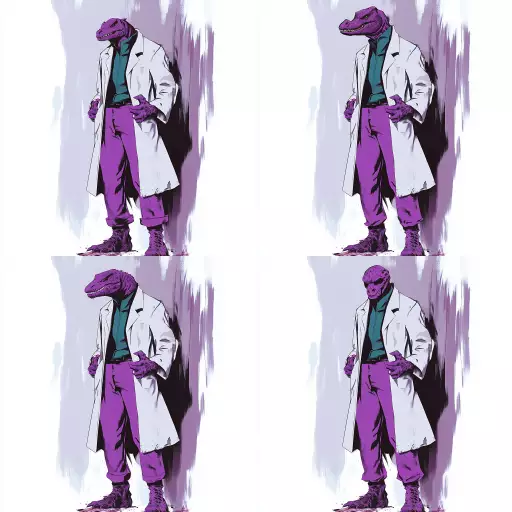Explore the Best AI Image Gallery

Pixels on Skin: How AI Image Generation is Reshaping Design
The creative world is abuzz with the emergence of AI image generation, a technology thats rapidly changing how we conceptualize, design, and create. Gone are the days when designers solely relied on their own artistic vision and traditional tools. Now, with the power of algorithms and vast datasets, AI can generate stunning visuals, opening up a realm of possibilities for designers across various disciplines.
From generating unique logo concepts to crafting intricate illustrations and designing immersive 3D environments, AI image generation is proving to be a valuable asset in the designers toolkit. But this revolutionary technology isnt without its challenges. Ethical considerations surrounding copyright, bias in algorithms, and the potential displacement of human creatives are crucial discussions that need careful consideration as we navigate this new landscape.
Unleashing Creativity with AI
One of the most exciting aspects of AI image generation is its ability to empower designers by augmenting their creative process. Imagine a designer struggling with a concept for a product packaging design. Instead of spending hours sketching and iterating, they can use an AI tool to generate multiple variations based on specific parameters, such as color palettes, typography, and imagery. This allows them to explore a wider range of ideas, refine their vision, and ultimately arrive at a more compelling design solution.
AI can also be instrumental in automating repetitive tasks, freeing up designers to focus on higher-level creative endeavors. Tasks like resizing images, generating variations for different platforms, or creating mockups can be efficiently handled by AI, allowing designers to dedicate their time and energy to the core aspects of design that require human ingenuity and intuition.
A Collaborative Future: Humans and AI Working Together
Its important to remember that AI image generation isnt about replacing human designers. Rather, its about creating a powerful partnership where AI tools augment and enhance the creative capabilities of humans. Think of it as an extension of the designers imagination, a collaborative force that can help bring their visions to life in innovative ways.
The future of design lies in harnessing the power of both human creativity and artificial intelligence. By embracing this collaboration, we can push the boundaries of whats possible, unlock new creative frontiers, and design a world that is more beautiful, functional, and inspiring.
Ethical Considerations: Navigating the Uncharted Territory
As with any powerful technology, AI image generation raises ethical concerns that need to be addressed thoughtfully. One significant issue is copyright. Who owns the rights to an image generated by an AI? Is it the developer of the AI, the user who provides the input prompts, or perhaps the AI itself?
Another concern is bias in algorithms. AI models are trained on massive datasets, which can reflect existing societal biases. This can result in AI-generated images that perpetuate stereotypes or reinforce harmful representations. Its crucial to ensure that AI training data is diverse and representative to mitigate these biases.
The Road Ahead: Trends Shaping the Future of Design
AI image generation is a rapidly evolving field, with new developments emerging constantly. Here are some trends that are shaping the future of design:
- Personalized Design : Imagine AI tools that can generate personalized designs based on individual preferences, lifestyles, and even biometric data. This could revolutionize everything from clothing and accessories to home decor and user interfaces.
- Immersive Experiences: AI can be used to create immersive 3D environments for gaming, virtual reality, and augmented reality applications. Imagine designing interactive experiences where users can explore fantastical worlds or visualize products in their own homes before purchasing them.
- Generative Design Optimization : AI algorithms can analyze complex design parameters and generate optimized solutions that are more efficient, sustainable, and functional. This has the potential to transform industries like architecture, engineering, and manufacturing.
The convergence of AI image generation and the creative industry is ushering in a new era of possibilities. By embracing this technology responsibly, fostering ethical considerations, and nurturing human-AI collaboration, we can unlock a future where creativity knows no bounds and design transforms our world in unimaginable ways.




















](https://images.ai-img.art/thumbnails/150/bddf3ae4a232290858389b933c866ad3be429ef2e25c23a9f4d7713ed6e44d0b.webp)




](https://images.ai-img.art/thumbnails/150/4289d1230b86a96c4d556636c3167bed0ef38f850826549517e4e45db4d87bf7.webp)
](https://images.ai-img.art/thumbnails/150/f9584153b4cddd8c9fab611dc10247549b275c59bc173251e37d0935874f9deb.webp)
](https://images.ai-img.art/thumbnails/150/c2c9c48b38fae37f0a457b80b084ed01ba803810fc8f488c8f610c03abc74049.webp)



](https://images.ai-img.art/thumbnails/150/008b5d5d49667cc2e93a5f8a8adfaa545963da99c39ff0901f5296294636400d.webp)






](https://images.ai-img.art/thumbnails/150/f67d9af3398150f2ab1bcf250717fea134275e2ca896252b54a4d9bb3719f9ac.webp)


